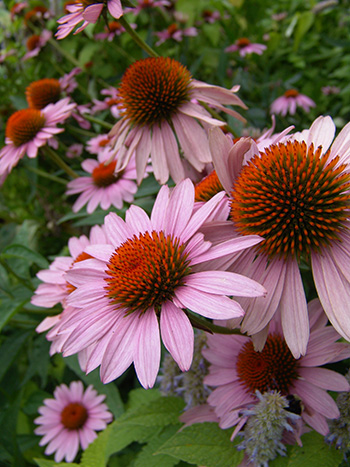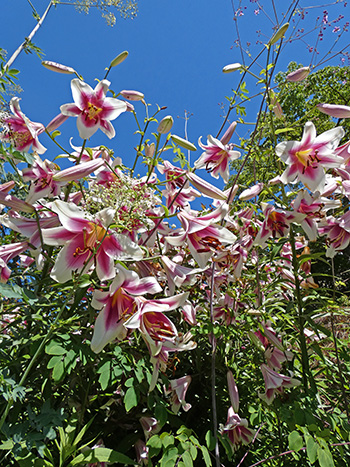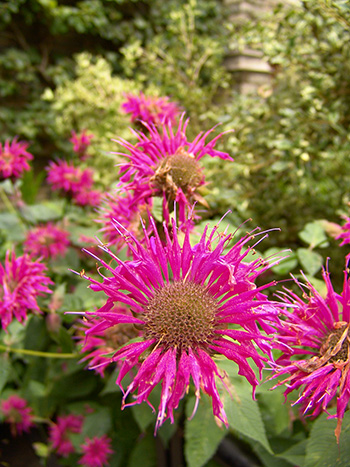
Plants of the Week: July 8
Guest Author: Ben Hitz – summer intern

Echinacea purpurea (purple coneflower)
E. purpurea is an herbaceous perennial coneflower native to the prairies of the United States. Purple coneflower is a drought tolerant, adaptable plant that thrives in average, dry to medium, well drained soil in full sun to part shade. Growing in clumps 2-4 ft tall and producing purple daisy-like flowers, it readily self-seeds and can be divided after about four years of growth. As a native plant, it has a long bloom time (July – August) and is very adaptable.
This flower is a great choice for a pollinator or wildflower garden. Finches, butterflies, and bees enjoy the seeds and pollen produced by this vigorous plant. E. purpurea can be found in the Scott Entrance Garden and the Pollinator Garden. photo credit: R. Robert

Lilium ‘Anastasia’ (orienpet lily)
This newly introduced lily is the result of hybridizing fragrant oriental lilies with large-flowered trumpet lilies. The result is a spectacularly large flower featuring pinkish inner petals fading to white outer petals. These fragrant flowers are long lasting and each plant can produce 20-30 blooms from mid to late summer.
Reaching 4-7 ft tall, orienpet lilies often need to be staked because of the weight of their giant candelabra of flowers. These lilies perform best in rich, wet, well drained soils in full sun.
The tall statue and striking flowers of Lilium ‘Anastasia’ make it an excellent border plant. It can be paired with other summer flowering plants to produce vibrant color contrasts. Lilium ‘Anastasia’ can be found in the Terry Shane Teaching Garden. photo credit: B. Hitz

Monarda ‘Raspberry Wine’ (bee balm)
Monarda ‘Raspberry Wine’ is a hybrid of Monarda didyma origin, a species in the mint family (Lamiaceae) native to eastern North America. Tubular, raspberry-red flowers protrude from mop-like heads that sit atop square stems featuring opposite, lanceolate leaves.
A perk of the ‘Raspberry Wine’ hybrid is that it is more resistant to powdery mildew than most other Monarda species. Monarda ‘Raspberry Wine’ grows 3-4 ft tall in clumps 2-3 ft across and is a wetland plant; it requires full sun and medium to wet soils that do not dry out. Monarda species are butterfly magnets, as a result they are a staple of butterfly gardens. Monarda ‘Raspberry Wine’ can be found in the Biostream. Photo credit: R. Robert





No Comments